Make an additional or placement application
Updated 26 November 2025
1. Before you start
Before you can use family public law services using MyHMCTS, you and your organisation must have completed these steps:
1. Set up an HMCTS Payment by Account, so that you can pay any relevant fees. 2. Register your organisation with MyHMCTS. 3. Set up your MyHMCTS user account.
Read the MyHMCTS registration guidance for further information and instructions. If your organisation already has an account, contact your administrator to get your account set up.
Once you have a MyHMCTS account, you can sign in using your email address and password.
Visit MyHMCTS: how to complete case administration tasks for guidance on case administration tasks, such as:
- sharing a case
- assigning a case
- filing a notice of change or acting
2. Make an additional application
You can make an application for additional orders or provisions to be made in the case.
1. Select ‘Upload additional application’ from the next step dropdown. Then select ‘Go’.
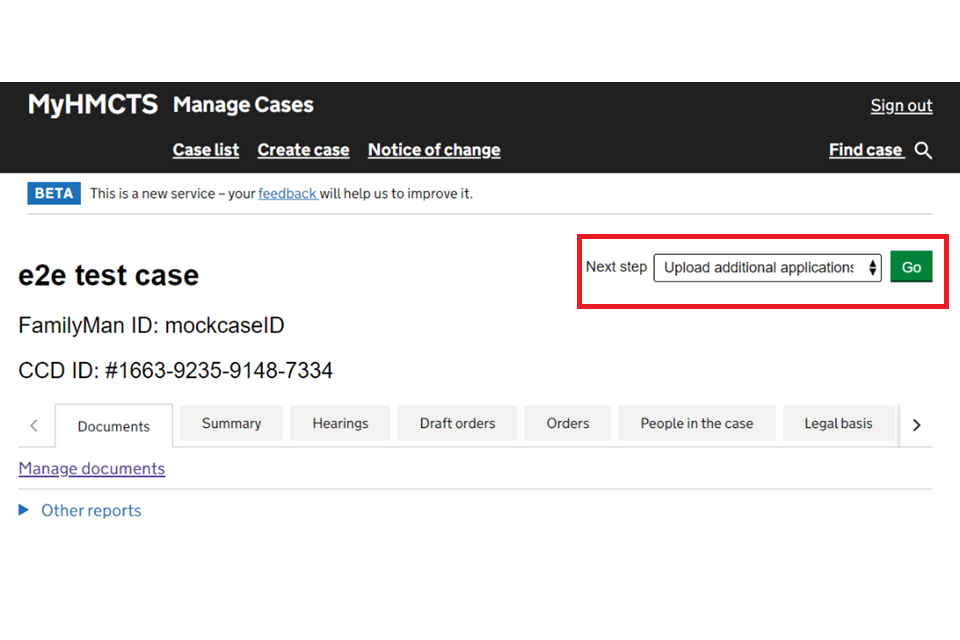
2. Select the type of application. If you are making a C2 application to add or remove someone on a case, state whether it is by consent or with notice. Then select the relevant applicant from the dropdown menu and ‘Continue’.
If you are making a confidential application, select ‘Yes’. You must mark the application as confidential if you are asking the court for permission to stop acting for a party on a case. Confidential applications will only be available to you, HMCTS and the judges.
If you have selected a C2 application or both options, go to the next step. If you have selected ‘Other specific order’, skip the next step.
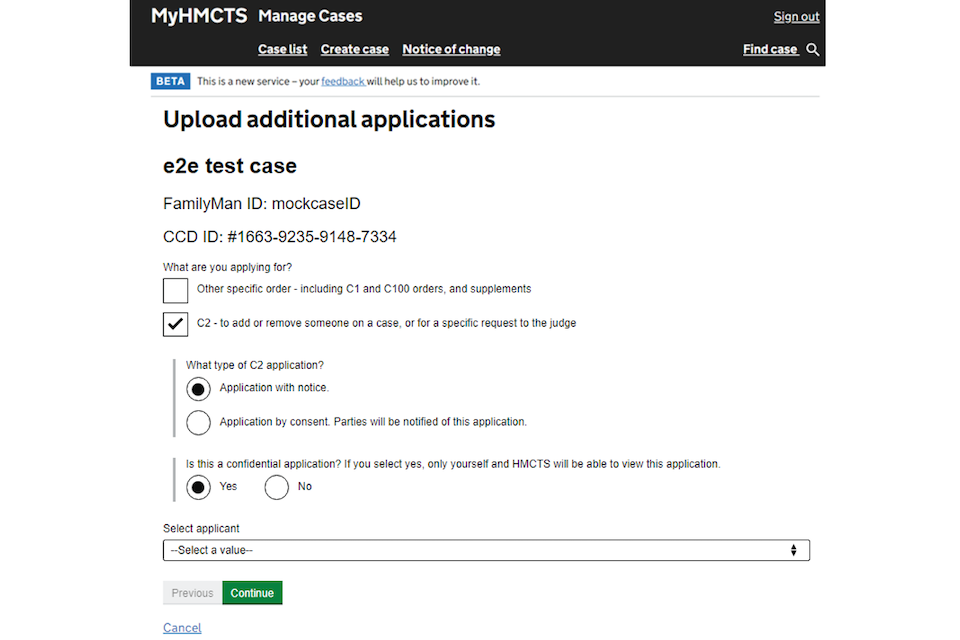
If you are making a C2 application, you must upload the application along with a draft order. The draft order should be formatted so it can be issued directly to parties. It must not be labelled as ‘DRAFT’ nor contain a watermark.
3. Select ‘Choose file’ and upload the application. Select any of the relevant check boxes below the question ‘Are you using the C2 to apply for any of the below?’ If you check ‘Parental responsibility’, select who is seeking responsibility. Select how soon you want the judge to consider the application. Then select ‘Continue’.
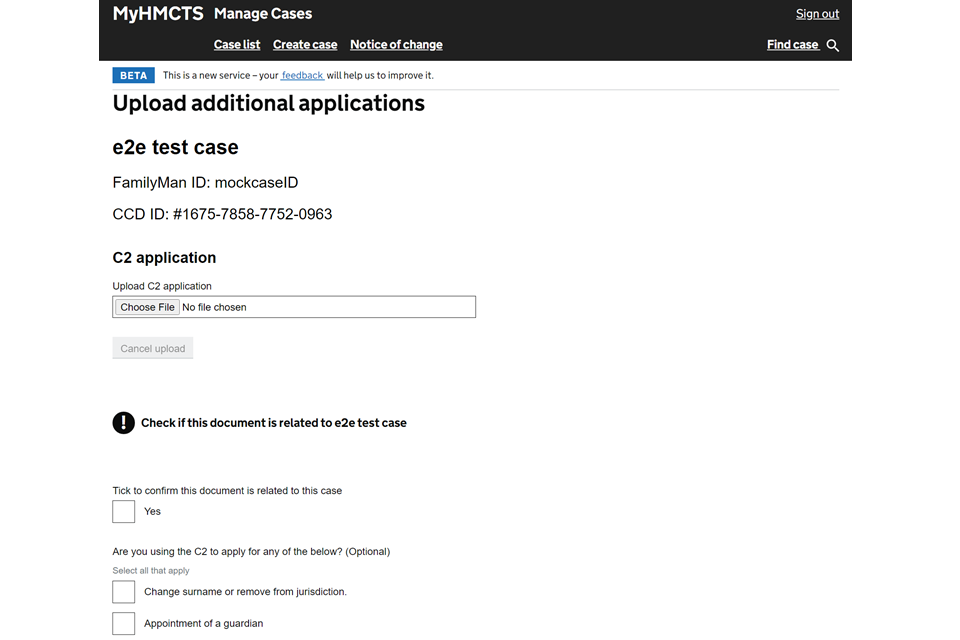
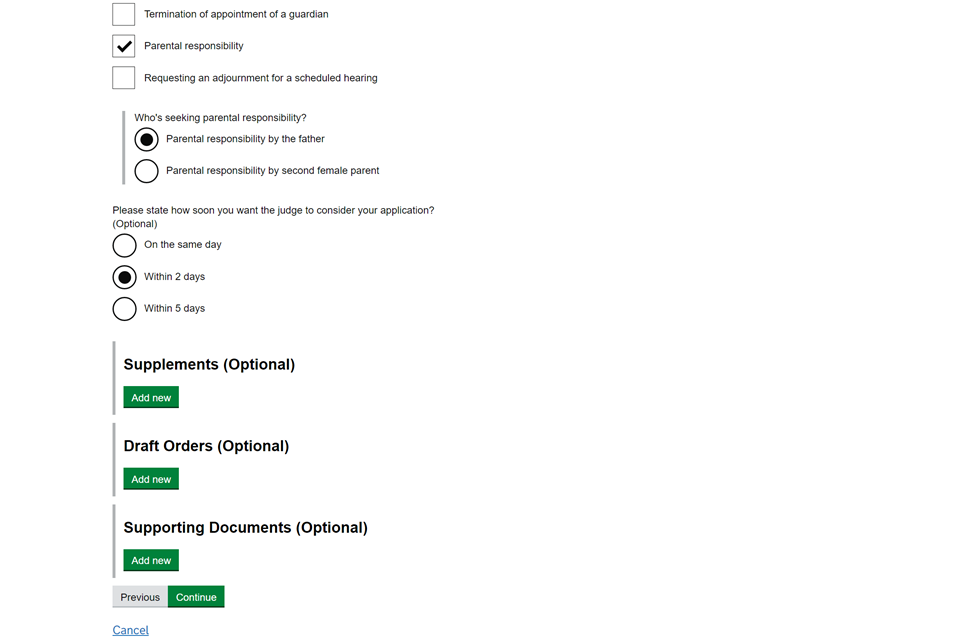
Make sure the C2 application and other documents are for the correct case and do not contain confidential addresses. You must remove or redact confidential addresses before uploading them as all parties are able to view C2 applications once submitted.
4. Select the type of other application you are making and upload the document. Select how soon you want the judge to consider the application. If you are making a C1 with supplement application, select the supplement name and upload the document. You can also add supporting documents if needed. Select ‘Continue’.
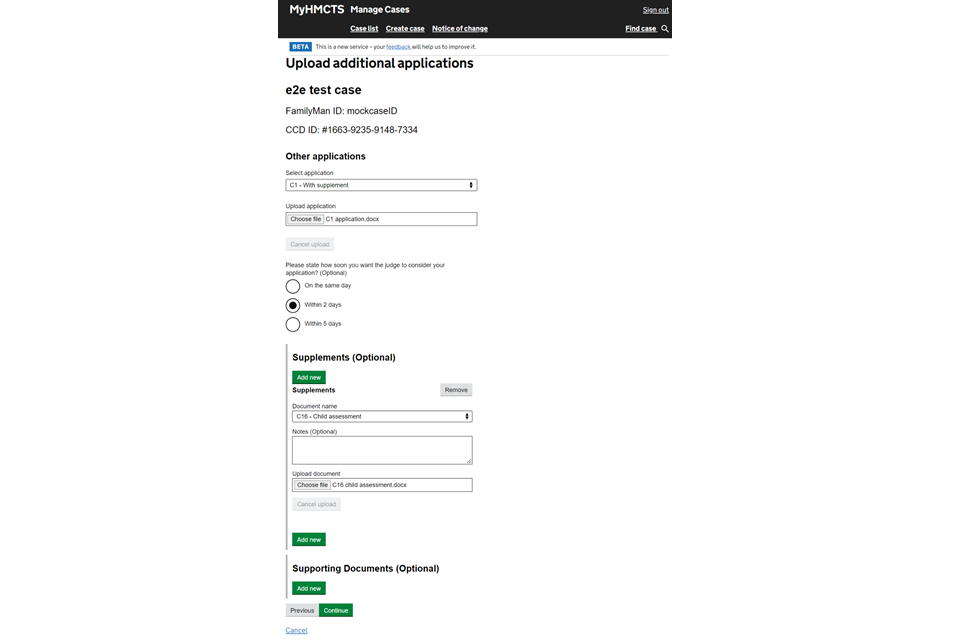
If you are making a C2 application, you must upload a draft order. If your local court directs you to upload the consent order as the application, you must upload the draft order here so the judge can approve the order.
5. Select ‘Add new’ to upload any orders and supporting documents. Then select ‘Continue’.
The order is not approved until it appears in the ‘Orders’ tab as approved by the judge. You should upload an application with the order, unless your local court directs you not to.
If you are applying for an adjournment only, and the application was 14 days or more before the scheduled hearing date, you will not be asked to pay. Your next screen will be to check answers – skip the next step.
6. On the payment screen, select ‘Yes’ if you have a PBA account and complete the account details. Then select ‘Continue’. Only select ‘No’, if you do not have a PBA account – the court will contact you for payment
Make sure to complete the customer reference – this will help your finance team reconcile the account when they receive the invoice.

7. Check your answers are correct. If you need to amend any of the details, select ‘Change’ next to the appropriate detail. When all the answers are correct, select ‘Save and continue’.

You will find the application in the ‘Other applications’ tab.
The service will tell us automatically about the application once it has been uploaded. We will then refer it to the judge for consideration and tell you the outcome.
3. Make a placement application
You must make a separate placement application for each child if there is more than one. However, you only need to pay the fee once if you make multiple placement applications on the same day. If you make a separate application on a different day, you will have to pay another fee.
If you are adding documents with confidential details, you must either redact these details before uploading the document or upload it in the ‘Confidential document’ section. It is your responsibility, as the local authority, to do this so that the documents are handled correctly and to avoid any risk of a data breach.
1. Select ‘Placement ’ from the next step dropdown. Then select ‘Go’.
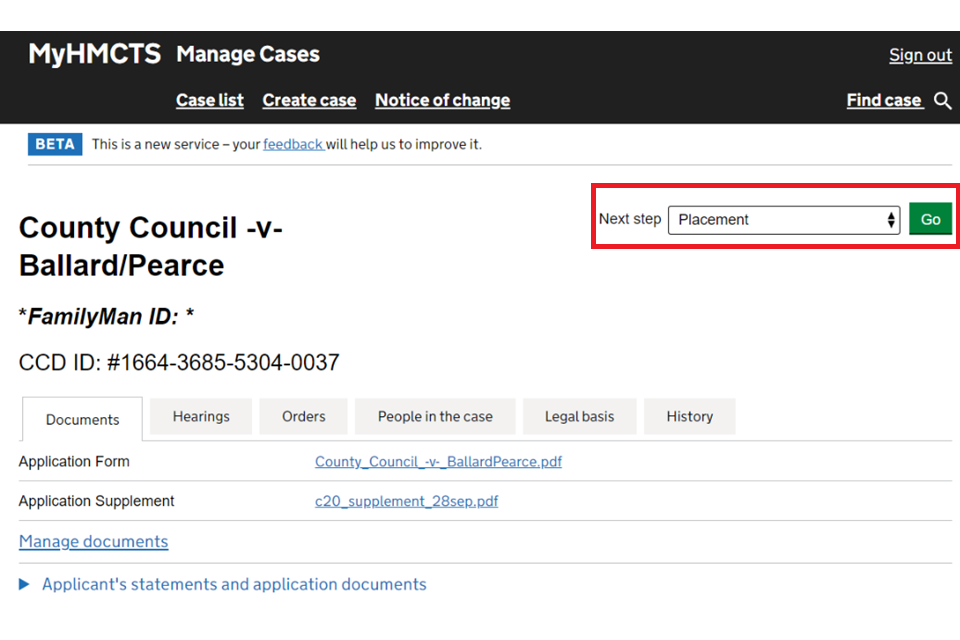
2. Select ‘Choose file’ and find the placement application to upload. In the supporting documents section, make sure ‘Birth/Adoption Certificate’ is selected as the document type and upload a scanned copy of the birth certificate.
You do not need to file the original birth certificate.
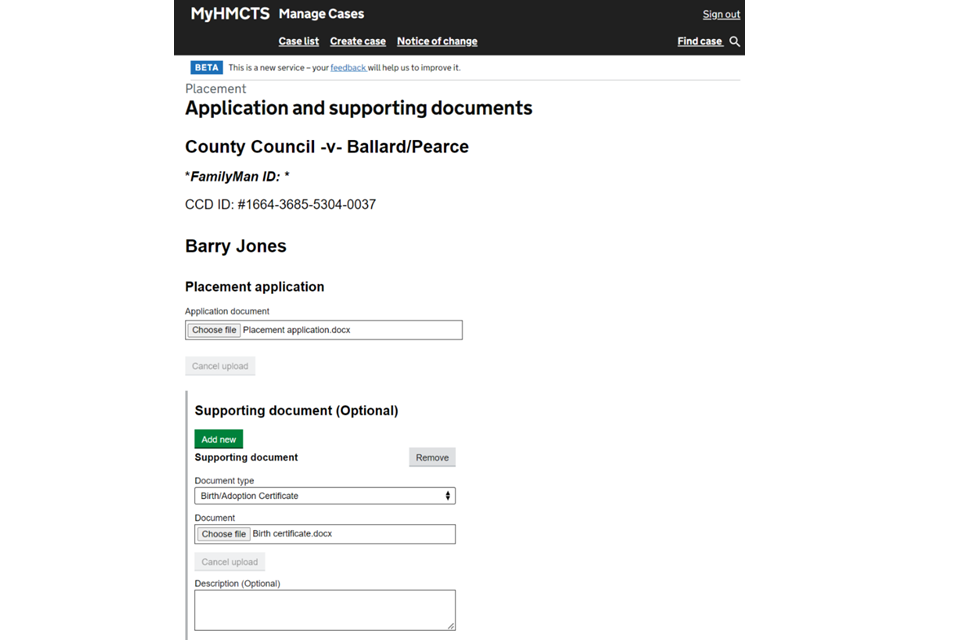
3. If the child’s address is not to be disclosed, do not include this in the application – attach the details with the child’s address as a separate document in the confidential section.
4. In the ‘Supporting document 2’ section. Make sure ‘Statement of facts’ is selected as the document type and upload the statement of facts file. Then in the confidential document section, select ‘Annex B’ as the document type and upload the annex B file.

5. If you have extra documents to add, upload them to the supporting document section if not confidential. Upload them to the confidential document section if confidential – such as the document with the child’s confidential address.
Confidential documents can only be seen by yourselves, the judge or legal adviser, Cafcass and the family public law administration.
6. When you have added all the documents, select ‘Continue’.
7. Select which respondents to send the notice of application to. If you are not sending it to all respondents on the case, specify who should be notified. Then select ‘Continue’.
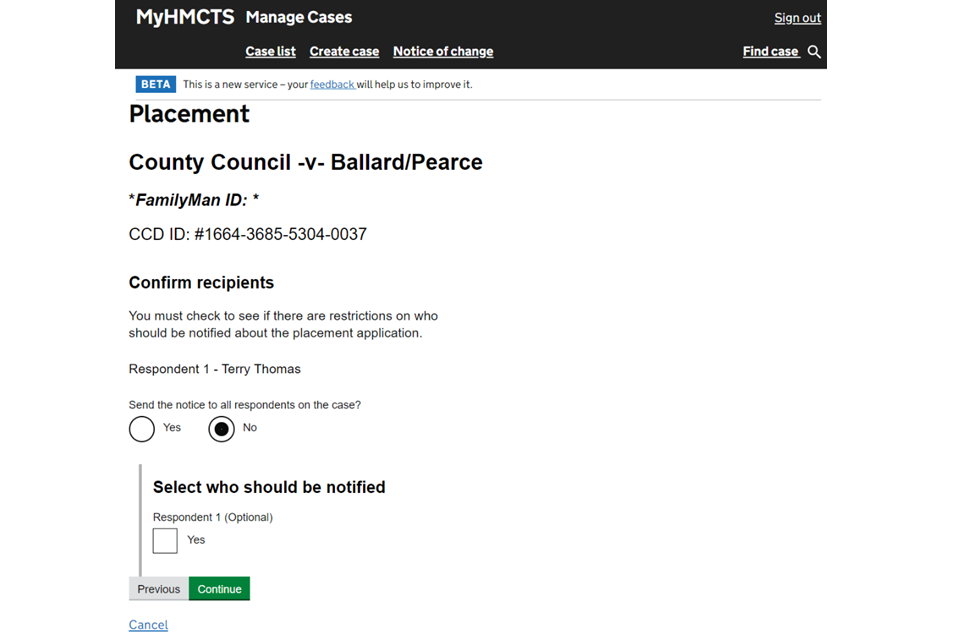
8. Add your PBA details and select ‘Continue’.
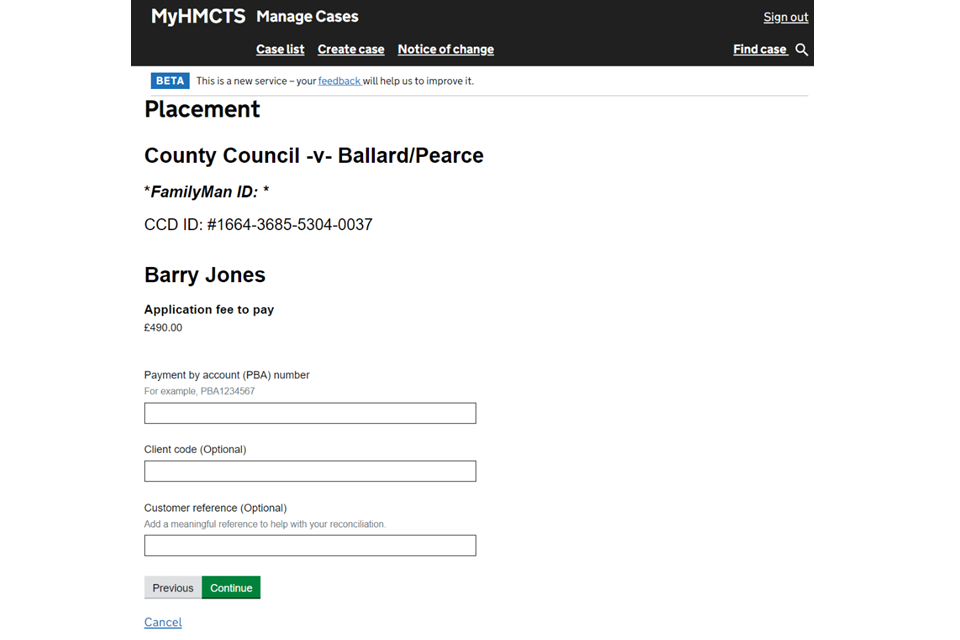
9. Check your answers and make any changes if needed. When all information is correct, select ‘Save and continue’.
10. You will find the application in a new tab called ‘Placement’.

Replace or add a document after you have submitted
You can replace or add any further supporting or confidential documents after you have submitted.
1. Select ‘Placement’ from the next step dropdown.

2. On the next screen, you can add, replace or remove a document:
- to add, select ‘Add new’ under ‘Supporting document’ or ‘Confidential document’. Select the document type then ‘Choose file’ browse to upload the document
- to replace, select ‘Choose file’ and browse to upload the replacement document
- to remove, select ‘Remove’ against the appropriate document then confirm you want to remove it
Once you have added, removed or replaced the documents you need to, select ’Continue’.

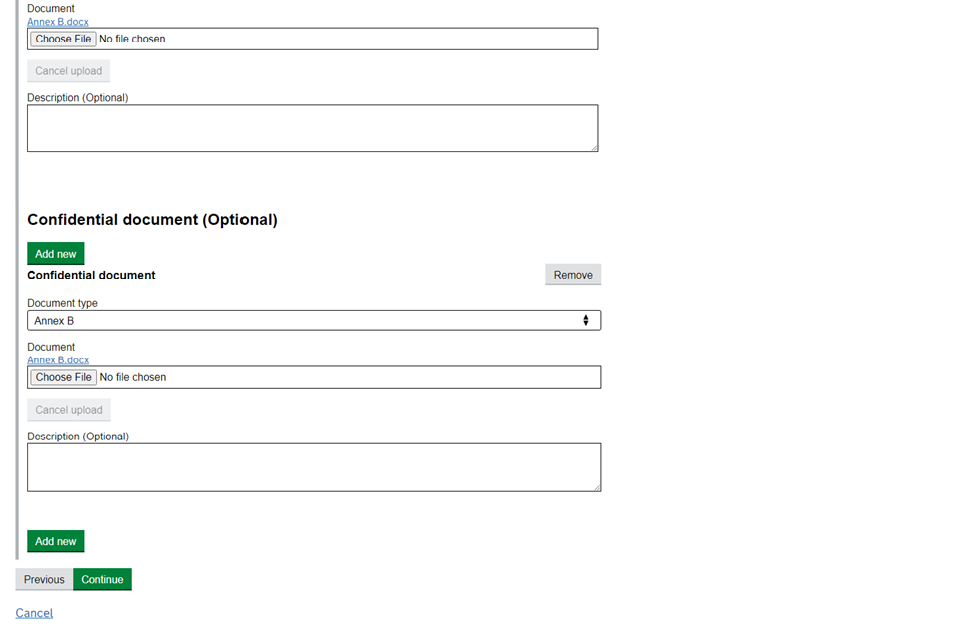
3. Select which respondents to send the notice of application to. If you are not sending it to all respondents on the case, specify who should be notified. Then select ‘Continue’.
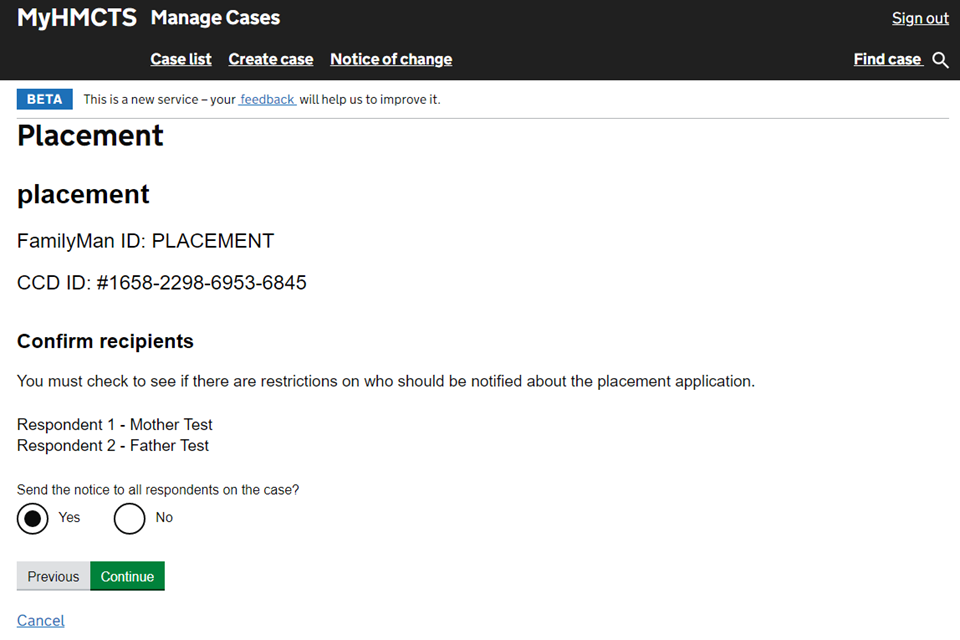
4. Check your answers and make any amendments if needed by selecting ‘Change’. When all information is correct, select ‘Save and continue’.
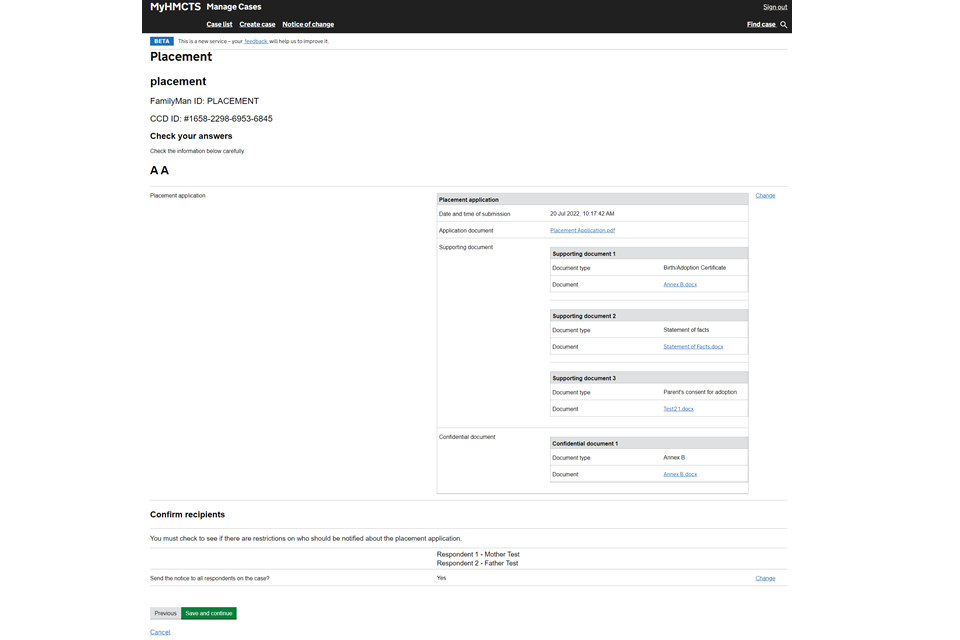
5. You will find the updated documents in the ‘Placement’ tab.
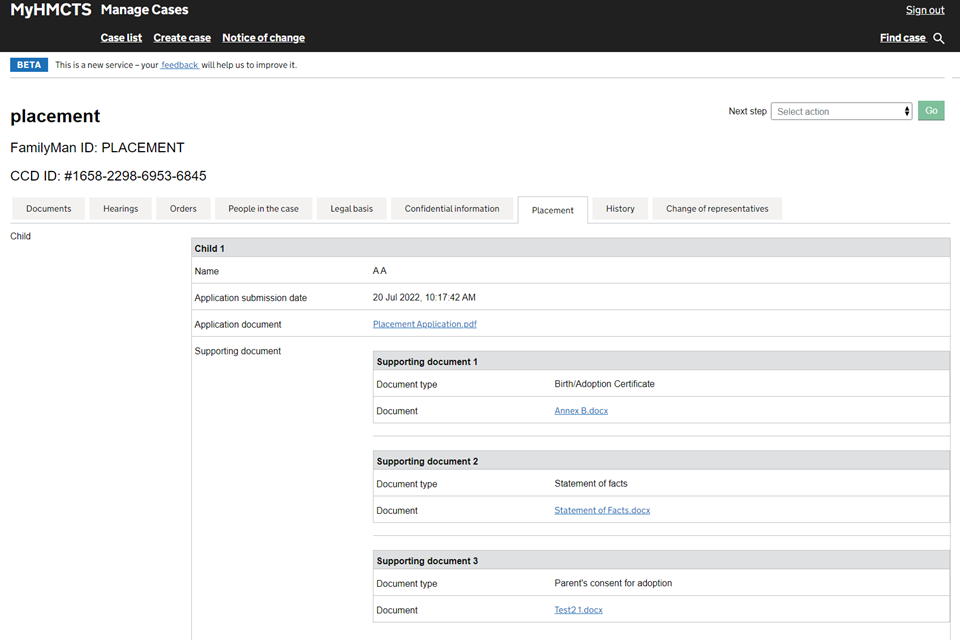
4. Get help with MyHMCTS
Managing cases and case access in MyHMCTS
For help with technical issues using MyHMCTS to manage a family public law case, email FamilyPublicLawServiceTeam@justice.gov.uk.
For support or guidance on a case, email the court and tribunal support centre (CTSC) at contactfpl@justice.gov.uk or call 0330 808 4424.
If you need to arrange for special measures at the hearing, you should contact the CTSC as soon as possible.
Find guidance for case administration tasks in MyHMCTS
Accessing your MyHMCTS account
If you are having trouble accessing MyHMCTS, make sure you are using the correct link. To manage a case, you must use https://manage-case.platform.hmcts.net.
You should also make sure you:
- check your internet browser is up to date – we recommend you use Google Chrome or Microsoft Edge (you cannot use Internet Explorer or Apple Safari)
- clear your cookies and your cache
- check your firewall and security settings
We recommend that you bookmark or favourite MyHMCTS in your internet browser. You should only create the bookmark or favourite once you have signed in and are on the homepage. Do not create it from the sign in or verification pages, or while you have a case or organisation open.
If you are still having trouble accessing MyHMCTS, try using a different device to sign in.
If you have an IT support team, they will be able to help with any device, browser and security issues.
If you have an issue with your MyHMCTS account, you should contact an account administrator in your organisation.
If you need additional support with your MyHMCTS account, including with verification codes, email MyHMCTSsupport@justice.gov.uk. We aim to respond within 5 working days.
